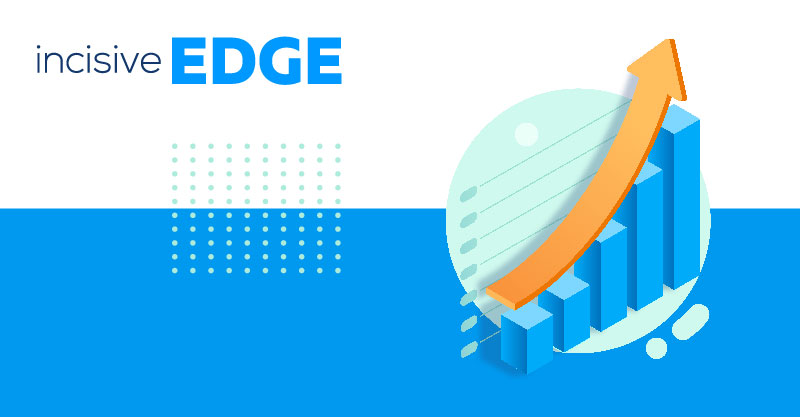Here’s the brutal truth about most of the SaaS lead generation advice:
It works for SaaS companies ONLY if you first understand the process of converting visitors into leads.
Otherwise, you end up over-focusing on technical aspects - setting up lead magnets, adding calls to action, using a basic lead generation tool and sales funnels but miss the most important part:
Understanding why your target audience would convert in the first place.
Luckily, that’s what we will help you with today.
Embark on a journey with us to master the art of generating SaaS leads. Our comprehensive approach will guide you through the framework and SaaS lead generation strategies, enabling you to effortlessly convert anonymous website visitors into promising marketing qualified leads and eventually into sales qualified leads. Along the way, we'll introduce you to powerful lead generation tools that complement the process and boost your success in turning these leads into enthusiastic potential users.
Ready? Let’s get right to it then.
Why Generate Leads in the First Place?
There's a particular b2c and/or b2b Saas lead generation misconception that drives us nuts.
It says:
“Every visitor to your site can convert into a user.”
If only it were true… In reality, though, 96% of your visitors don’t care about your product at all.
At least not yet.
Sure, these people might be experiencing the type of problems your saas company helps to overcome. But they're far from even thinking about buying anything yet.
During the Awareness stage of the buying cycle, potential customers are primarily focused on understanding their problem rather than actively seeking a specific solution. In this critical phase, effective lead-generation efforts become instrumental in capturing their attention and interest.
By tailoring the right approach, businesses can engage these potential customers, offer valuable insights, and guide them towards discovering the best solutions that address their needs.
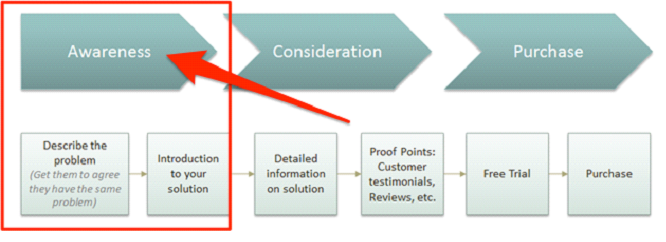
Sure, content marketing helps them to come in contact with your product. But they're not ready to evaluate it as a potential solution.
And so, instead of selling to them, you need to initiate building a business relationship with them.
And that’s where lead generation comes in.
Enter SaaS Lead Generation
HubSpot defines lead generation as:
“The process of attracting and converting strangers and prospects into leads.”
But we admit, although the attracting and converting parts of the definition are clear, the term “leads” might refer to many different things:
- You could interpret it as visitors looking for your product,
- Or people who currently experience the problem your product is solving, or perhaps…
- It could also potentially refer to anyone interested in learning more about your business…
So let’s define the term as well.
A lead is “a person who has indicated interest in your company's product or service in some way, shape, or form.”
In other words, a lead is not a casual visitor or sales-ready prospect but someone, who, by taking a specific action on your site, showed potential interest in buying your services.
And the entire lead generation process focuses on identifying actions a visitor might adopt to indicate their interest and using them to convert them into leads.
Lead generation is a vital component of any company's sales strategy, acting as the bridge to convert leads into valuable customers. Whether your sales team directly handles the process or you follow a well-designed marketing and sales funnel, incorporating the right SaaS lead generation strategies, along with effective marketing efforts, can be a transformative factor for your company's success.
By embracing the best lead generation strategies and optimizing to attract organic traffic, you can ensure a steady and high-quality stream of potential customers flowing through your sales pipeline.
Lead generation is a vital component of any company's sales strategy, and it can be used to convert leads into customers. Whether your sales team is handling the sales process or you have a marketing and sales funnel that leads to customers, the right SaaS lead generation strategy can be a game-changer for any company.
Read How the Top Companies Chase and Close SaaS Sales Leads
The SaaS Lead Generation Framework
We've already told you what lead generation is and outlined what you achieve by converting visitors into more leads – new business relationships.
So let’s now focus on the requirements for generating leads:
- Traffic. First, you need to attract people to your site who experience problems your product helps overcome.
- Actions that would help qualify someone as a lead.
- An incentive for them to become one. This visual by Aaron Beashel perfectly illustrates the process:
This visual by Aaron Beashel perfectly illustrates the process:
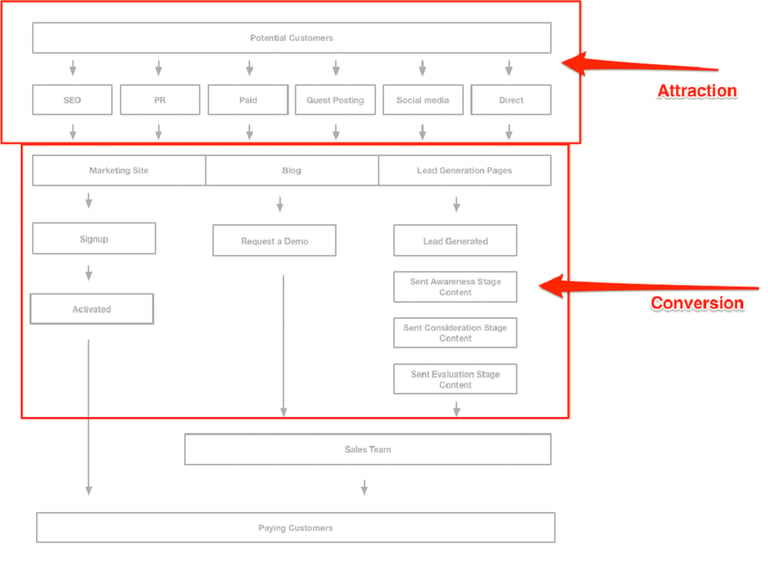
At the Attraction stage, you focus on bringing as many visitors to your site as you can.
You can use various channels to achieve that:
- Content: Publish blog posts that answer your audience’s most burning questions related to their problem
- SEO: Optimize your site to rank in search engines for specific keywords
- PR: Raise awareness of your product in the media
- PPC: Set up paid advertising campaigns in search engines and on social media
- Guest posting: Write content for top industry websites to introduce your product to large, and relevant audiences
- Social media: Build and engage an audience
The Conversion stage, however, is all about turning those visitors you’ve attracted into leads.
At this stage, you’ve already attracted visitors to the site, and you’re now ready to start collecting their information and moving them into your sales funnel.
The process starts with identifying actions a visitor should complete to qualify them as a lead.
For the most part, these actions involve indicating:
Interest in the problem your product helps to overcome. You typically uncover this by offering a person an educational piece of content, like an eBook, checklist, or any other resource to download.
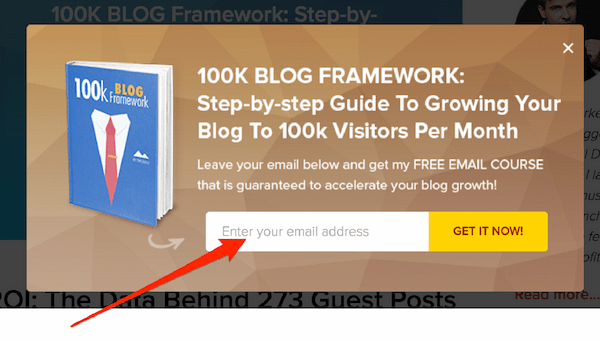
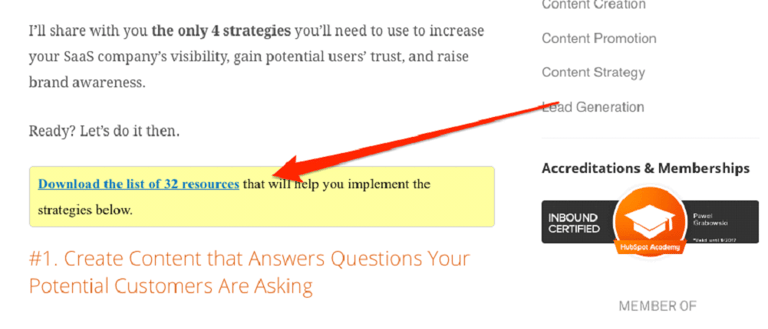
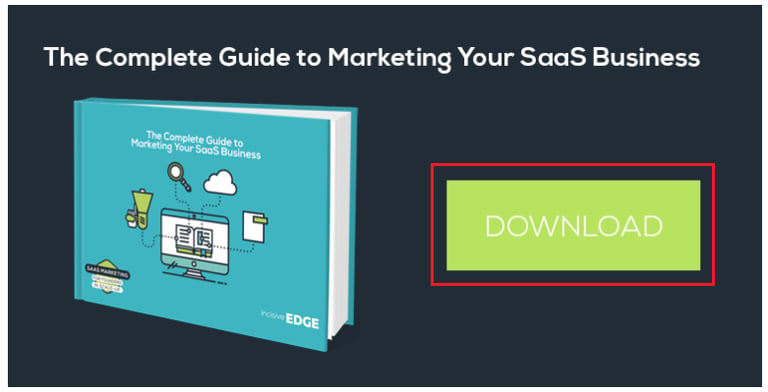
Interest in your specific solution. Actions that help identify this interest include filling in applications on the site, downloading case studies, requesting a demo, and other content types relevant to the final stages of the buying cycle.

These incentives are commonly referred to as lead magnets – offers that provide value to visitors in exchange for their personal information.
Once you've chosen a lead magnet to convert prospects into leads, it's essential to seamlessly integrate it into your SaaS business website. This requires launching effective lead generation campaigns, strategically promoting the lead magnet to attract potential customers and convert them into valuable leads.
You do it by placing relevant calls to action on your pages.
A call to action (CTA) is a clickable banner, button, or any other element designed to initiate the desired action from a visitor.
Calls to action typically promote offers and incentives that visitors can download or avail of in return for signing up to your email list.
Calls to action typically work in one of two ways:
They allow a person to download the offer directly through the CTA. For example:
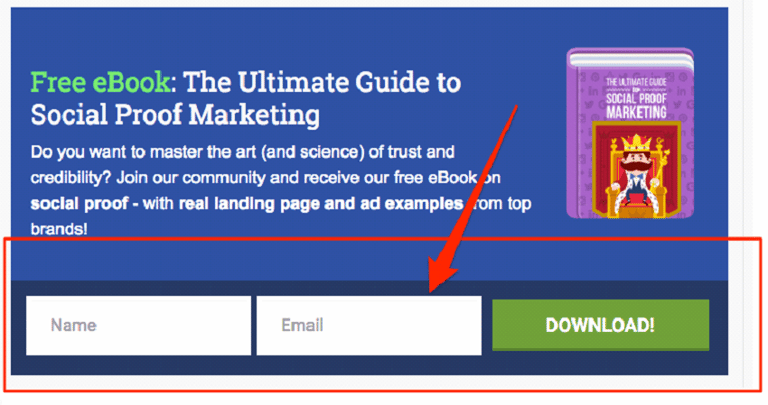
In this instance, the call to action includes the entire pitch for your offer.
Or send visitors to a dedicated landing page that allows them to learn more about the offer.
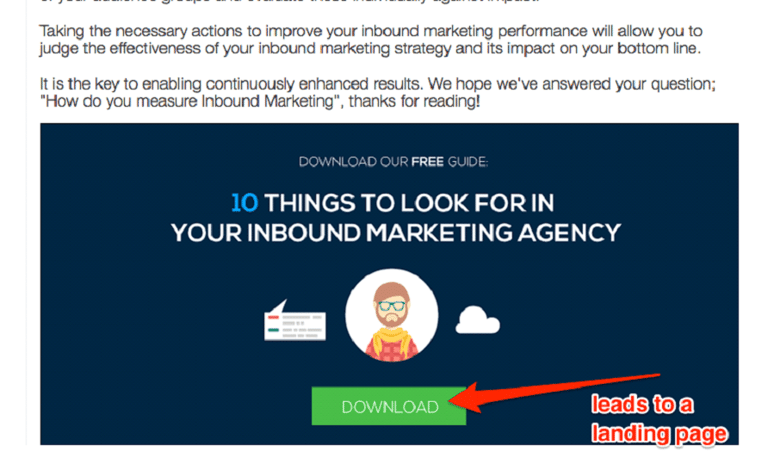
And before you ask, no, neither of these methods is better than the other. They both convert visitors. However, each offers specific benefits:
A direct download cuts the number of steps a visitor needs to take to become a lead, increasing the chances for conversion.
A landing page, on the other hand, allows you to present more information to a visitor, make a stronger case for becoming a lead, and also, use a longer signup form, pre-qualifying them in the process.
You should, therefore, use the inbound marketing strategy that matches your inbound goals and visitor needs.
If you’re offering shorter lead magnets, like content upgrades, for example, or want to boost conversions, then use the direct download method.
On the other hand, if you’ve created a long-form eBook or a whitepaper, and want to use it to generate pre-qualified leads, then using a landing page is a much better option.








